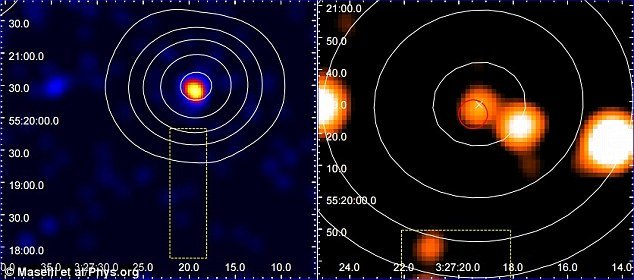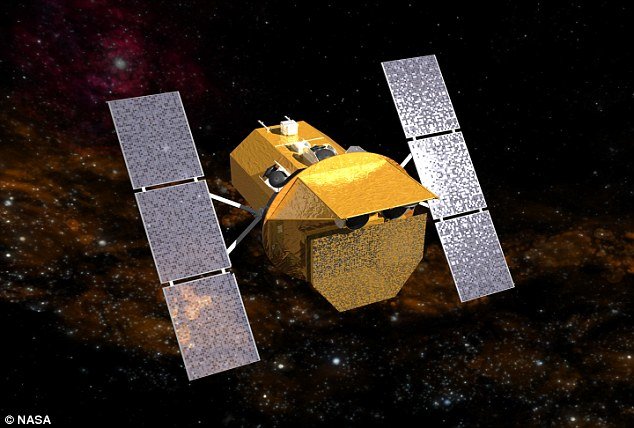
For four months, team observed 21 bright radio sources from the revised Third Cambridge Catalogue, leading to the detection of 'significant' emissions for nine of them with the X-ray Telescope.
But, when using the spacecraft's Ultraviolet/Optical Telescope, no sources could be found.
These new observations support earlier assumptions that the source of these emissions may be 'heavily obscured' active galaxies.
In the new study, led by Andrew Maselli of the Institute of Space Astrophysics and Cosmic Physics of Palermo, Italy, researchers used the Swift spacecraft to observe a group of 3CR radio sources between November 2014 and March 2015.
This catalogue contains those detected at 178 MHz, and provides valuable insight on radio galaxies and quasars.
'The extragalactic subset of the revised Third Cambridge Catalogue (3CR) of radio sources has a long history as one of the fundamental samples used to understand the nature and evolution of powerful radio galaxies and quasars, as well as their relationship to their host galaxies and environments on parsec through megaparsec scales,' the researchers explained in the paper, published to arXiv.
So, they set out to obtain more information on 21 bright radio sources in the 3CR catalogue, with potential to make identifications.
To observe the group of radio sources, they used two telescopes onboard the Swift spacecraft: the X-ray Telescope (XRT) and the Ultraviolet/Optical Telescope (UVOT).
The investigation revealed nine of the sources in question exhibit significant emissions in the soft X-ray band.
For each of these sources, along with four others with no soft X-ray association, the researchers were able to assign an infrared counterpart in the All Wide-field Infrared Survey Explorer catalogue.
But, no optical/ultraviolet counterpart was found using the UVOT.

'It is worth mentioning that no optical/UV counterpart has been detected in the UVOT filters at the position of the 21 NVSS sources: this is in agreement with the notes reported in the 3CR catalogue in which the large fraction of these 3CR unidentified radio sources were classified as obscured active galaxies,' the researchers wrote.
Still, the researchers say it is too early to determine this for sure, and future spectroscopic analysis in the infrared range are needed to more accurately identify the nature of the sources.



So we are not alone.